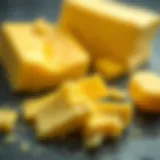Optimal Wattage Insights for Sous Vide Cooking
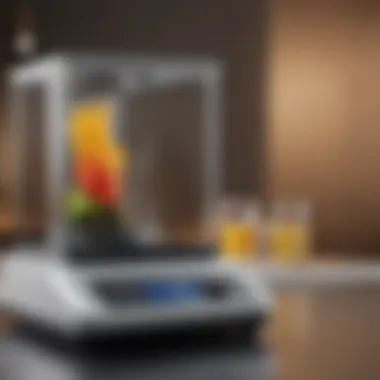

Intro
Sous vide cooking represents a method that combines precision with simplicity, yet its effectiveness hinges significantly on one major factor: wattage. As more cooking enthusiasts embrace this technique, understanding the wattage of sous vide equipment is crucial for achieving ideal results. Wattage affects not just the speed at which water heats but also the overall consistency of cooking, which can be vital for various dishes. High wattage machines heat water more rapidly, allowing chefs to cook larger quantities almost effortlessly.
In the following sections, this article will delve into the various wattage categories, detailing the pros and cons associated with each. Whether you are just starting your sous vide journey or looking to refine your technique, knowing the nuances of wattage will help you make informed decisions. Let's explore how to determine the optimal wattage for your sous vide cooking needs.
Understanding Sous Vide Cooking
Sous vide cooking represents a revolutionary approach in the culinary arts, bringing precision and consistency to the forefront. This technique involves cooking food in a vacuum-sealed bag submerged in water at controlled temperatures. Understanding sous vide cooking is crucial for anyone looking to elevate their cooking skills, offering insights into how precise temperature control affects texture, flavor, and nutrition.
The real essence of sous vide lies in its ability to maintain the integrity of ingredients while ensuring they cook uniformly. Unlike traditional methods that can lead to uneven cooking, sous vide allows for a highly predictable outcome. By grasping key concepts surrounding this technique, cooks can leverage the benefits to achieve restaurant-quality dishes at home.
Definition and Origins
Sous vide, which literally means "under vacuum" in French, first gained traction in the culinary world in the 1970s. The technique's introduction can be credited to chefs who aimed to enhance the quality of their food while reducing waste. They realized that cooking food in vacuum-sealed bags preserves moisture and enhances the flavor.
Today, sous vide cooking has transitioned from commercial kitchens to home kitchens, driven by advances in technology and equipment. This evolution has made this approach accessible, allowing enthusiasts to experiment with various ingredients and flavors without the fear of overcooking.
Principles of Precision Cooking
The principle of sous vide cooking centers around the idea of precision. The food is cooked at a specific temperature for a set period, allowing for exact control over doneness. Common sous vide temperatures range from 120°F for delicate proteins to 185°F for vegetables.
Key aspects include:
- Temperature Control: The ability to maintain a constant temperature ensures food cooks evenly without hot spots.
- Extended Cooking Times: Food can be cooked for long periods without adverse effects, making it forgiving for busy cooks.
- Enhanced Flavors: The vacuum-sealed environment traps aromas, allowing flavors to meld and intensify.
The steady, low-temperature cooking process drastically improves the quality of proteins, making them tender and juicy.
The Role of Wattage in Sous Vide
Wattage plays a crucial role in sous vide cooking, influencing not just the efficiency of the device, but also the quality of the final results. Understanding how wattage operates within the context of sous vide can help cooks optimize their cooking experience. With sous vide, the goal is to achieve precise heat control for consistent and repeatable results. Wattage affects how quickly water baths can reach and maintain the desired temperatures, which is essential for perfecting dishes.
When considering wattage, a few key factors come into play:
- Heating Power: Higher wattage means faster heating, which can significantly reduce cooking times.
- Temperature Stability: Maintaining an ideal temperature throughout the cooking process is critical for achieving the desired doneness and texture in food.
- Cooking Capacity: Different wattages are suited for different volumes of food, making wattage a critical factor in choosing the right sous vide machine.
Understanding these elements can aid both novice and seasoned cooks in selecting the appropriate equipment for their specific needs.
Wattage Explained
Wattage refers to the amount of power a sous vide device uses to heat water, expressed in watts. In practical terms, a sous vide cooker with higher wattage will heat the water faster than its lower-wattage counterparts. This capacity is important for various reasons.
- Size of Water Bath: A larger container of water will require a more powerful unit to heat efficiently.
- Desired Temperature Increase: If starting at a lower baseline temperature, higher wattage will shorten the time needed to reach the target temperature.
- Consistency: Devices with appropriate wattage can maintain the temperature more consistently, which is vital for sous vide cooking, where precision is paramount.
Those utilizing sous vide cooking should be mindful of the power ratings of their equipment. The wattage is often indicated in the product specifications, and this helps in assessing whether it will meet individual cooking requirements.
Impact on Heating Efficiency
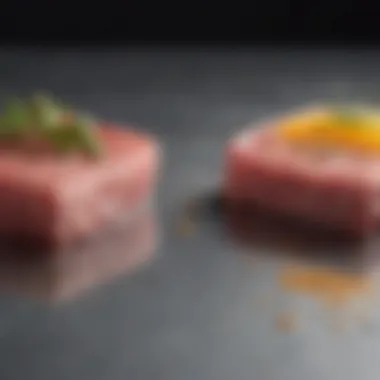

Heating efficiency is dictated by wattage, which means that the power of a sous vide circulator directly influences its performance. Efficient heating has several implications:
- Time Reduction: Higher wattage leads to faster temperature adjustments, minimizing waiting time.
- Energy Usage: While higher wattage units may consume more energy, their ability to reduce cooking time can lead to overall efficiency in energy expenditure.
- Quality of Cooking: Consistently maintaining the right temperature throughout the cooking process ensures that the food cooks evenly, improving the flavor and texture of the final dish.
In terms of energy consumption, it's important to consider the units’ operational efficiency. Higher wattage may also entail a higher electric bill, which should be accounted for in the decision-making process, especially for home cooks.
"Understanding wattage allows cooks to choose a sous vide device that maximizes both efficiency and quality in their dishes."
Overall, the relationship between wattage and sous vide cooking cannot be overlooked. It guides not only the choice of equipment but also impacts the practical outcomes in the kitchen.
Optimal Wattage Ranges
The wattage of a sous vide machine plays a crucial role in determining its effectiveness and suitability for various cooking requirements. Different wattage models can produce different results in terms of heating speed and cooking consistency. Understanding the optimal wattage ranges can help individuals select the right device that meets their cooking style and volume of food to prepare.
Selecting the right wattage not only enhances the cooking experience but also ensures that culinary results are satisfying. For example, in a bustling kitchen that often prepares larger portions, higher wattage models might be more beneficial. Conversely, if one typically cooks small batches, lower wattage machines might suffice. Thus knowing these ranges provides essential insight into machine capabilities and overall kitchen efficiency.
Low Wattage Models
Low wattage sous vide machines generally operate within the range of 300 to 800 watts. These models may appeal to home cooks who are experimenting with sous vide or those who often prepare smaller meals. The primary advantage of low wattage units is their lower initial cost. They are often more affordable and use less energy, making them an attractive option for environmentally conscious users.
However, it is important to note that low wattage models can take longer to bring water to the desired temperature. This can lead to extended cooking times, which may affect texture and doneness if precision is not adhered to. For meticulous cooking, the limited heating capacity might not yield the best results.
Medium Wattage Models
Medium wattage models typically fall between 800 to 1200 watts. They strike a balance between efficiency and functionality, making them suitable for a wide range of cooking operations. This wattage range tends to suit average home cooks who regularly cook moderate portions. Medium wattage machines also heat water to the desired temperature faster compared to their low wattage counterparts, which allows for a more reliable cooking process.
These models can maintain consistent temperature levels over longer cooking periods, facilitating culinary projects that benefit from precision. They offer greater versatility, supporting a transition from small to larger meals without sacrificing quality. Users can enjoy accurate results with this versatility, accommodating various recipes almost seamlessly.
High Wattage Models
High wattage sous vide machines usually range from 1200 to 1500 watts and above. These units cater to serious enthusiasts who value efficiency and precision. With capable heating abilities, these models rapidly reach and maintain target temperatures, ideal for cooking large cuts of meat or multiple servings simultaneously. They are particularly valuable for professional environments or home chefs preparing for events or gatherings.
The primary drawback of high wattage machines includes an increase in energy consumption and potentially higher costs. While the initial investment may be more significant, the efficiency and time savings gained can often outweigh these costs in the long run. Ultimately, high wattage models are most suitable for users who need robust temperature control and faster cooking times for larger volumes.
The choice of wattage directly impacts how sous vide cooking operates; selecting the right model will greatly enhance culinary results while aligning with personal cooking habits.
Understanding these ranges aids in making an informed choice, ensuring that home cooks can pick the right tool for their culinary endeavors.
Choosing the Right Wattage for Your Needs
Selecting the right wattage for your sous vide cooking is a crucial decision that affects every aspect of your culinary experience. The wattage of your sous vide machine determines how quickly it can heat water to the desired temperature, thus impacting your cooking times and overall efficiency. A well-chosen wattage ensures that your meals are cooked perfectly and consistently, which is essential for achieving the desired texture and doneness. Moreover, understanding the wattage will help you make informed choices aligning with your cooking habits and lifestyle.
Factors to Consider
When choosing the wattage for sous vide cooking, several factors come into play:
- Cooking Volume: The amount of food you typically prepare will significantly influence the wattage needed. Larger volumes may require higher wattage.
- Cooking Duration: Longer cooking times could benefit from machines with higher wattage to maintain temperature stability.
- Desired Precision: If you seek precision in your cooking, a higher wattage ensures that your water carries the same temperature throughout.
- Energy Consumption: Assess your energy use preferences. Higher wattages may consume more electricity but save time and achieve temperature goals faster.
Each of these factors plays an integral role in ensuring that your sous vide cooking aligns with your goals and preferences.
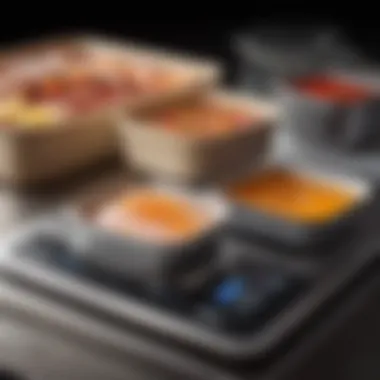

Matching Wattage to Cooking Volume
The relationship between wattage and cooking volume is directly proportional. A sous vide device with a wattage below 600 watts is ideal for small volumes. However, if you regularly cook larger volumes, devices with 800 watts or more become necessary. Higher wattage enables quicker water heating, ensuring that even if the cooking volume increases, you can reach the desired temperature promptly and efficiently.
- Small Volumes (Under 1-2 Liters): For smaller meals such as individual portions or side dishes, 600 to 800 watts usually suffice.
- Medium Volumes (2-5 Liters): For a family meal or more substantial side dishes, devices ranging between 800 to 1200 watts are recommended. This wattage ensures effective heating without prolonging the cooking time.
- Large Volumes (Over 5 Liters): Cooking for gatherings or events where you need to prepare larger quantities will require a machine with at least 1200 watts. This capability aids in maintaining a consistent cooking temperature despite the added load.
In summary, understanding how wattage affects cooking volume is key. Choosing a machine that aligns with your typical cooking capacity leads to a better sous vide experience.
Benefits of Higher Wattage
Understanding the advantages of higher wattage in sous vide cooking is crucial for anyone looking to improve their culinary results. Higher wattage not only accelerates temperature reach but also contributes to consistent cooking performance. As temperature control is fundamental in sous vide, these benefits can greatly influence the overall cooking experience.
Faster Temperature Reach
One of the primary advantages of higher wattage is the speed at which the water bath reaches the desired cooking temperature. Sous vide cooking relies on precise temperature control to ensure the food is cooked evenly and retains its intended flavors. Higher wattage units can heat the water faster, allowing for a quicker start to the cooking process. This is particularly useful when preparing larger quantities or thicker cuts of meat, which require more time to bring up to temperature.
When the wattage is insufficient, the heating process can take considerably longer, resulting in extended cooking times that may affect tenderness and texture. Notably, faster temperature reach means less waiting time, making it a more efficient option for busy home cooks who want quick, yet quality results.
"A sous vide machine with higher wattage can cut down prep time significantly and enhance overall cooking precision."
Consistent Cooking Performance
Another significant benefit of higher wattage sous vide machines is their ability to maintain a stable temperature throughout the cooking cycle. In sous vide cooking, maintaining a consistent temperature is vital to ensure that food is cooked evenly. Higher wattage models tend to recover faster after the lid is opened or when adding food.
When using lower wattage machines, there is often a risk of temperature fluctuations, which can lead to uneven cooking. With higher wattage models, the heating element compensates promptly for the heat lost when adding cold food, offering a more reliable cooking environment. This consistency is especially important when tackling delicate proteins, such as fish or sous vide egg dishes, where even slight deviations can result in a less desirable outcome.
Drawbacks of Higher Wattage
When it comes to sous vide cooking, one might easily assume that higher wattage is synonymous with enhanced performance. However, it is essential to understand the drawbacks associated with higher wattage units. While they do offer speed and efficiency, these benefits come with their own set of challenges that can affect both cooking and overall costs.
Increased Energy Consumption
One of the most significant drawbacks of higher wattage sous vide machines is the increased energy consumption. When a unit operates at elevated wattage levels, it uses more electricity to maintain the desired temperature, especially when cooking larger volumes of food or when the initial temperature of the water is far from the desired cooking temperature. For instance, a machine operating at 1200 watts will consume much more energy compared to one operating at 800 watts. The implications of this can be reflected in the utility bill.
Numerous cooking sessions involving high wattage machines can lead to substantial costs over time. The ecological impact also cannot be overlooked, as increased energy usage contributes to a larger carbon footprint. This brings to light the importance of considering not just convenience and speed, but also the environmental implications of energy consumption.
Cost Implications
Beyond energy costs, higher wattage sous vide devices often come with a higher initial purchase price. The manufacturing process of more powerful machines can be more complex and increased overall functionality can lead to a premium on cost. In addition, maintenance and repair costs can tend to be higher for such devices. If a higher wattage machine requires repairs, the cost of parts and labor can result in unexpected expenses.
This cost aspect is crucial for consumers, as it shifts the focus from merely acquiring a powerful machine to assessing whether the return on investment is justifiable based on cooking habits and overall usage. For amateur cooks or those who sous vide infrequently, investing heavily in a high wattage machine may not be prudent.
In essence, while high wattage sous vide machines promise performance and efficiency, they also bring challenges in terms of energy usage and initial investment. Consumers should weigh these drawbacks carefully against their own cooking needs before making a selection.
Insights on Lower Wattage
When it comes to sous vide cooking, understanding lower wattage can be crucial. Many home cooks may overlook this aspect, focusing instead on machines with higher wattage. However, lower wattage sous vide circulators offer their own set of advantages and considerations. Recognizing the relevance of this topic allows cooks to tailor their equipment choices to their specific needs.
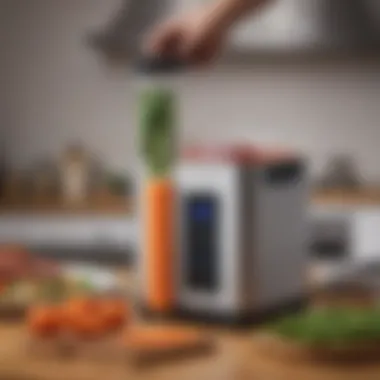

Advantages
- Cost Efficiency: Lower wattage machines are generally more affordable. For beginner cooks or those exploring sous vide methods, a lower investment can be appealing.
- Energy Consumption: As these machines consume less electricity, they contribute to lower overall energy costs. This can be especially significant for those who cook sous vide frequently.
- Gentler Cooking: Lower wattage can lead to a slower heating process. This can be beneficial for delicate proteins or vegetables, promoting even cooking without the risk of overcooking.
- Compact Size: Generally, lower wattage models tend to be more compact. This can fit well in smaller kitchens or for individuals with limited storage space.
- Simplicity: Using a lower wattage circulator can be straightforward. They often come with fewer features than high-wattage models, which may be ideal for those who prefer basic functionality.
Disadvantages
- Longer Heating Times: One significant drawback of lower wattage is the longer time it takes to reach the desired temperature. This can be frustrating if time is of the essence, especially for users looking for quick meal prep.
- Difficulty with Large Volumes: Lower wattage machines may struggle with larger quantities of food. When cooking for a crowd, it may take considerably longer to heat water to the necessary temperature.
- Temperature Fluctuations: While lower wattage can provide gentler cooking, it may also lead to less precise temperature control. This can affect the final outcome of certain dishes, particularly those demanding exacting conditions.
- Limited Features: As mentioned earlier, these models often come with fewer settings. For advanced cooks who rely on specific features, this could be a frustrating limitation.
- Not Ideal for High-Heat Cooking: For recipes needing higher temperatures or searing processes, lower wattage devices may prove insufficient.
In summary, weighing the pros and cons of lower wattage can help one make an informed decision when selecting a sous vide machine. Whether the benefits of cost, energy efficiency, or simplicity outweigh the disadvantages will largely depend on the individual chef’s cooking style and needs.
Common Myths About Sous Vide Wattage
Understanding the common myths surrounding wattage in sous vide cooking is crucial for both novice and experienced cooks. Misunderstandings about wattage can lead to inefficiencies or unsatisfactory results. Addressing these myths allows cooks to make informed choices about their sous vide machines and cooking processes. This section delineates two prevalent misconceptions that can skew perceptions about wattage and its effects on cooking outcomes.
Myth: Higher Wattage Equals Better Results
One widespread myth is the notion that higher wattage consistently results in improved cooking outcomes. This idea stems from the assumption that more power automatically enhances efficiency and effectiveness in sous vide cooking. While it is true that higher-wattage machines can heat water more quickly, this is not the sole factor influencing food quality. Cooking time and water immersion depth are equally important. Essentially, sous vide is about precision, not just raw power.
When preparing food with sous vide, temperature consistency is vital. A unit with lower wattage can still maintain the desired temperature accurately once it reaches it. Moreover, high wattage may not always be necessary for smaller cuts of meat or delicate vegetables. Therefore, optimization must consider the type of food being cooked and the amount of water being heated. As a result, a high-wattage machine may not provide better outcomes for every culinary scenario.
"A sous vide machine's wattage should align with its intended purpose and not just serve as a marker for quality."
Myth: All Sous Vide Machines are Equal
Another myth is the perception that all sous vide machines, regardless of wattage, offer similar functionality and results. This claim disregards the diversity in design, heating elements, and overall technology of various sous vide devices available on the market. Each machine has distinct characteristics that can significantly influence cooking performance.
Factors such as build quality, water circulation technology, and temperature precision vary greatly among models. For instance, a lower wattage machine with superior circulation technology may outperform a higher wattage device lacking effective heat distribution. Furthermore, additional features like programmable settings or connectivity options can also enhance the user experience. Thus, individuals should be careful not to assume that wattage alone dictates the effectiveness of a sous vide device.
Understanding these two prominent myths can better equip cooks to choose the right wattage for their sous vide cooking needs, enhancing their culinary success.
Practical Tips for Wattage Consideration
When determining the appropriate wattage for sous vide cooking, several practical tips can enhance the decision-making process. Understanding personal cooking habits and the specific needs of dishes is fundamental. This section provides helpful insights into how to optimize wattage selection for better culinary results.
Assessing Your Cooking Habits
Before investing in a sous vide machine, assess your cooking style. Consider how often you cook sous vide, the types of dishes you prepare, and how many servings you usually make. If cooking for larger groups frequently, a higher wattage machine might be beneficial. It can heat water faster and maintain a stable temperature, ensuring even cooking. In contrast, for occasional sous vide enthusiasts making smaller meals, lower wattage could suffice. Keeping these factors in mind can better inform your choice and lead to a more satisfying cooking experience.
Experimenting with Different Settings
Don’t hesitate to experiment with different wattage settings, if your machine allows it. This experimentation can provide practical insights into cooking times and dish outcomes. With varying wattages, ingredients might react differently. Trying different settings may help identify the most favorable conditions for specific foods. Documenting these experiments can build a personal reference guide tailored to your preferences and tastes.
"Understanding your habits is the first step toward mastering sous vide cooking."
By utilizing these practical tips, you can approach wattage selection with a clearer perspective. This will aid in achieving better results, ultimately transforming the way you enjoy sous vide cooking.
Finale and Recommendations
In the realm of sous vide cooking, the choice of wattage is not merely a technical specification; it significantly influences the overall cooking experience. Understanding how wattage impacts temperature consistency, heating efficiency, and cooking times is essential for both novices and seasoned cooks. This article has provided a detailed exploration of these elements, emphasizing the various considerations that should guide your wattage selection.
Summarizing key takeaways:
To summarize, optimal wattage varies based on cooking volume and specific food types. Higher wattage models can offer faster heat-up times and consistent cooking results but come with increased energy costs and potentially more complex features. On the other hand, lower wattage options may take longer to reach the desired temperature but can effectively suit smaller cooking tasks or less demanding preparational styles. It is crucial to align your chosen wattage with your individual cooking habits and preferences to maximize efficiency and enjoyment.
Final thoughts on wattage choices:
Ultimately, selecting the right wattage for your sous vide machine hinges on a balance of practicality and personal needs. Consider your usual batch sizes, preferred cooking styles, and even your energy consumption goals. Experimentation may be the key to discovering what works best in your kitchen. A well-informed decision leads to enhanced culinary results, so don’t rush the process.
"The right wattage unlocks the full potential of sous vide cooking, transforming mundane meals into spectacular culinary creations."






